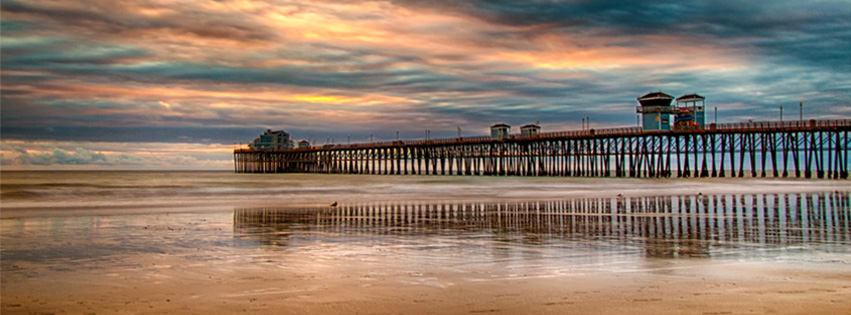They over process or “color burn” their landscapes. Before the invention of these modern softwares or even digital cameras photographers had to get the shots right in the camera.
If you can learn to get your shots right in camera you will eliminate most of the time spent color correcting and editing. One of the best ways of doing this is to learn to use polarizing filters and neutral density filter’s. I took the image above with an adjustable ND filter. These are essential for professional looking landscape images.
Polarizing Filter
Polarizing filters– sometimes called the secret weapon of professional landscape photographers– create richer, more vivid colors. The filter pulls double duty by (1) cutting down on reflections from bright surfaces like water and rocks, and (2) adding rich blues to skies by darkening them and increasing the color and tonal saturation throughout the frame. Polarizing filters are most effective when shooting at a 90-degree angle to the sun. It will therefore be least effective when the sun is either in front of or behind you. Polarizing filters will also enhance clouds, but you have you to be careful with your lens choice. Just like you can overdo it in post production, it’s quite possible to overdo it in-camera if you use a polarizing filter on a super-wide-angle lens. The result will be uneven shades of blue in an over-saturated sky.
On the next page is a quick video lesson on using a neutral density filter. It’s all about getting beautiful dreamy landscape beach photos.
GO TO THE NEXT PAGE FOR THE VIDEO
Read more on polarizing and neutral density filters at the original article on Digital Photography School
Source: Digital Photography School
Image Source: John Yakubik


I’ve found that my images seem to be better received when I do over-saturate a bit. People seem to think that they are more “dramatic.”
Amazing
Thanks Marilyn
I can do that without filters.
Danny there is no way you can get the same length of exposure without a filter that you could with one. It also allows for richer more vibrant colors. That was the point.
People who do not know much about photography seem to like the over saturated pictures. Many say they are more dramatic. I myself, do not like over saturation at all. I do use ND filter for after sunset shots, because I know it is best to do so. I love the dreamy technique look, and find most customer’s do too, and I love less post processing, I don’t even have to do anything to color or contrast.
Thanks Charlene We Always Appreciate Input From Our Readers
Would love to get a neutral density filter, wanted to put on my wish list, have to figure out what size to get. 🙂
Barbara Clarke
What are your thoughts on the variable ND filters? Are they really just a polarizing filter that goes really dark?